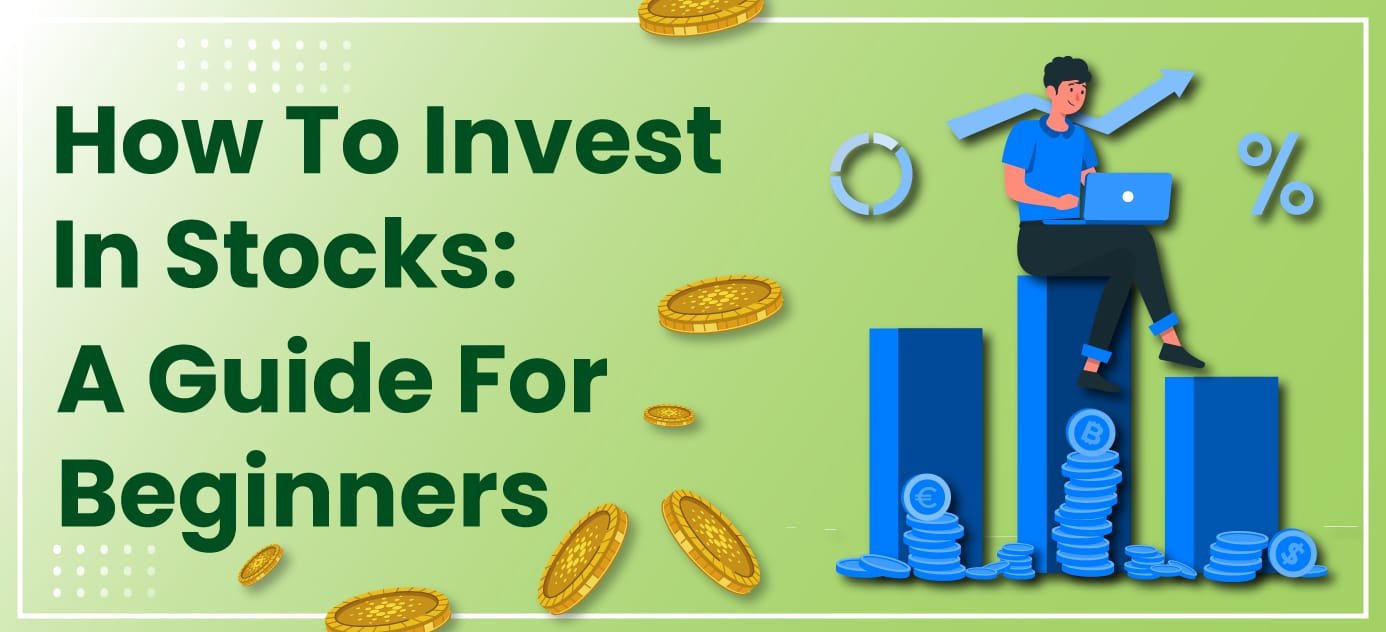What Are The Top Investment Platforms For 2025?
Introduction
Investment platforms have revolutionized the way people approach their financial goals. Whether you’re a seasoned investor or a beginner just getting started, these platforms offer an array of tools and services that allow you to grow your wealth. But with so many options available, how do you choose the right one? In this article, we’ll explore the top investment platforms for 2025, highlighting the best features, benefits, and unique selling points that make these platforms stand out in a crowded market.
As 2025 approaches, investing has become increasingly accessible, thanks to innovations in technology, finance, and regulation. Whether you’re interested in stocks, bonds, real estate, or cryptocurrency, there’s an investment platform for everyone. The right platform for you will depend on your investment goals, risk tolerance, and level of experience.
Key Takeaways
- Robinhood and Betterment are great for beginners with low fees and easy-to-use interfaces.
- E*TRADE and Fidelity are ideal for experienced investors who require advanced tools and customer support.
- Many platforms now offer commission-free trading and access to diverse asset classes, including cryptocurrencies and fractional shares.
- Always review each platform’s fee structure, security measures, and educational resources before investing.
What Makes an Investment Platform Top-Tier?

When evaluating an investment platform, several factors can determine whether it qualifies as top-tier. The best platforms provide a combination of user-friendly features, advanced tools, low costs, and a wide range of investment options. Below, we’ll explore the key elements that make an investment platform stand out as top-tier.
1. User-Friendly Interface
A top-tier investment platform is easy to navigate, even for beginners. The user interface (UI) should be intuitive, with clear menus, easy access to account details, and simple navigation. Whether on desktop or mobile, the design should be straightforward, minimizing confusion and allowing users to execute trades or review their portfolio with ease.
Why it matters:
An intuitive interface ensures that both novice and experienced investors can quickly adapt to the platform without a steep learning curve. A confusing or complicated interface can lead to mistakes or frustration, especially for those just starting in the world of investing.
2. Diverse Investment Options
A strong investment platform will offer a wide variety of investment choices to meet different financial goals and risk tolerances. This includes:
- Stocks, ETFs, and mutual funds
- Bonds (corporate, government)
- Real estate investment trusts (REITs)
- Cryptocurrency and digital assets
- Commodities and foreign exchange (Forex)
Why it matters:
A diverse selection of assets allows investors to build a balanced and diversified portfolio tailored to their preferences, risk appetite, and investment objectives.
3. Low Fees and Transparent Pricing
A major factor in assessing the quality of an investment platform is the cost of using it. Top-tier platforms should have low or no commissions for trades and offer clear, transparent pricing for services. Hidden fees—such as charges for inactivity, transfers, or withdrawals—can significantly erode an investor’s returns.
Why it matters:
Fees directly affect profitability. Even small fees can add up over time, especially for active traders. Transparent pricing ensures there are no surprises, and investors can accurately forecast their costs.
4. Security and Safety Features
Given the digital nature of investment platforms, security is paramount. Top-tier platforms should employ robust security measures, such as:
- Two-factor authentication (2FA)
- End-to-end encryption
- Insurance for digital assets
- Regulatory compliance (e.g., FDIC insurance in the U.S.)
Why it matters:
Security is essential for protecting your personal and financial data. An insecure platform leaves investors vulnerable to hacking, data breaches, or fraud. Top platforms prioritize security to ensure peace of mind for users.
5. Educational Resources and Support
High-quality investment platforms offer educational tools to help investors make informed decisions. This may include:
- Tutorials and courses on investing
- Webinars and video lessons
- Articles, blogs, and guides on financial concepts and market trends
- Customer support via chat, email, or phone
Why it matters:
Not all investors are experts, and many newcomers benefit from educational support. Access to learning resources helps users understand how to make smarter investment choices. Additionally, responsive customer support can solve problems quickly, improving the overall user experience.
6. Advanced Tools for Experienced Investors
Top-tier platforms don’t just cater to beginners—they also offer features that meet the needs of experienced traders. These tools might include:
- Advanced charting and technical analysis tools
- Real-time market data
- Automated trading (such as robo-advisors)
- Backtesting tools for strategy testing
- Margin accounts and options trading
Why it matters:
Experienced investors require sophisticated tools to make complex decisions, manage risk, and execute strategies. Platforms that cater to this demand help users refine their trading and investing approaches, contributing to a better overall experience.
7. Mobile Accessibility
In today’s digital world, many investors prefer to manage their portfolios and execute trades on the go. A top-tier investment platform should have a well-designed mobile app that offers the same features and functionality as the desktop version.
Why it matters:
Mobile access is essential for today’s fast-paced world. A robust app ensures that users can stay on top of their investments no matter where they are, ensuring greater convenience and flexibility.
8. Customizable Investment Plans and Portfolio Management
Top-tier platforms offer customizable portfolio management options, where investors can set up strategies tailored to their risk tolerance, goals, and time horizon. For instance, they may provide automated portfolio rebalancing or allow users to create a personalized asset allocation plan.
Why it matters:
Customization allows users to invest in ways that align with their personal financial goals, whether they’re seeking aggressive growth or preserving capital. Rebalancing tools also help ensure that portfolios remain aligned with evolving market conditions and individual preferences.
9. Regulatory Compliance and Reputation
A top investment platform must operate under the regulations of relevant financial authorities (e.g., SEC in the U.S., FCA in the U.K.). Compliance with these regulations ensures that the platform follows ethical practices and provides investor protection.
Why it matters:
Regulatory compliance fosters trust and safeguards your investments. Platforms that adhere to laws and regulations demonstrate accountability, transparency, and reliability. A reputable platform also has strong customer feedback and positive reviews.
10. Tax Efficiency and Reporting
Good investment platforms assist users with tax-efficient investing and offer tools for tax reporting, such as capital gains tracking or tax-loss harvesting features. Additionally, they should generate tax reports that make filing easier.
Why it matters:
Taxes can significantly affect returns on investments. Platforms that support tax-efficient strategies or provide accurate tax reports can save users money and effort, improving the investment experience.
Why These Features Matter
The combination of these features makes a platform reliable, efficient, and user-friendly. A top-tier platform provides a balanced experience that empowers investors to make educated decisions, minimize fees, maximize returns, and protect their assets. These qualities help investors stay engaged and confident as they work toward their financial goals.
In summary, the best investment platforms stand out because they offer:
- A smooth user experience
- A wide range of investment options
- Transparent pricing and low fees
- Advanced tools for seasoned investors
- High security and educational support
- Mobile accessibility and regulatory compliance
Top Investment Platforms for 2025
Here’s a list of the top investment platforms that stand out for 2025 based on the above criteria:
1. Robinhood
Overview: Robinhood continues to be a popular investment platform due to its easy-to-use interface, commission-free trades, and access to a variety of investment options. Whether you’re interested in stocks, ETFs, options, or cryptocurrencies, Robinhood makes it simple to start investing with a small amount of capital.
Key Features:
- No commission fees on trades
- Access to fractional shares
- Cryptocurrency trading available
- User-friendly mobile app
- Educational resources for beginners
Pros:
- No account minimums
- Fractional shares allow for smaller investments
- Free options trading
Cons:
- Limited customer support
- Lacks some advanced research tools
2. E*TRADE
Overview: ETRADE is a well-established name in the investment industry, known for its comprehensive range of investment options and strong customer service. Whether you’re looking to trade stocks, bonds, mutual funds, or even engage in retirement planning, ETRADE offers the tools you need to make informed decisions.
Key Features:
- Comprehensive research tools
- Access to retirement accounts (IRAs, 401(k)s)
- Advanced trading platforms for experienced traders
- Low-cost fees
Pros:
- Extensive educational resources
- Strong customer service
- Advanced tools for experienced traders
Cons:
- Fees for certain trades
- Complex interface for beginners
3. Fidelity
Overview: Fidelity is one of the largest investment firms in the world, providing a wide range of services including retirement planning, wealth management, and brokerage services. Fidelity’s platform stands out for its low-cost structure, investment options, and robust research tools.
Key Features:
- No account minimum
- Access to stocks, bonds, ETFs, and mutual funds
- Advanced research and analysis tools
- Excellent customer service
Pros:
- Low fees on most trades
- Great customer support
- Access to a broad range of investment options
Cons:
- Somewhat complex for beginners
- No cryptocurrency trading
4. Betterment
Overview: Betterment is an example of a robo-advisor that automatically invests for you based on your risk tolerance and investment goals. It’s ideal for investors who prefer a hands-off approach to managing their portfolios. Betterment uses technology to offer customized portfolios and tax-saving strategies.
Key Features:
- Automated portfolio management
- Tax-efficient investing strategies
- Socially responsible investing options
- Personal financial planning available
Pros:
- Hands-off, automated investing
- Tax loss harvesting and financial advice
- Low minimum investment
Cons:
- Limited control over individual investments
- Higher fees for premium services
5. Vanguard
Overview: Vanguard is synonymous with long-term investing, thanks to its low-cost index funds and ETFs. It’s a platform known for empowering investors who want to build wealth over time with passive investment strategies.
Key Features:
- Low-cost index funds and ETFs
- Strong focus on long-term investing
- Retirement planning tools
Pros:
- Low fees for most investments
- Excellent for long-term investors
- Comprehensive retirement planning tools
Cons:
- Lack of individual stock options
- The interface may not be as user-friendly as others
6. Charles Schwab
Overview: Charles Schwab is a trusted name in investing, offering a wide array of tools, educational resources, and a user-friendly platform. Schwab provides access to commission-free trading, alongside low-cost ETFs, stocks, and bonds.
Key Features:
- Commission-free trades
- Robust research tools
- Fractional share investing
Pros:
- Wide range of investment options
- No account minimums
- Excellent research tools
Cons:
- Fees for some services
- Limited cryptocurrency options
7. Webull
Overview: Webull is a popular brokerage platform that offers commission-free trading on stocks, ETFs, and options. It’s well-suited for active traders who value advanced charting and technical analysis tools.
Key Features:
- Commission-free trades
- Advanced trading tools
- Access to cryptocurrency trading
Pros:
- Great for active traders
- Comprehensive charting tools
- Cryptocurrency trading available
Cons:
- Limited customer support
- Lack of educational resources for beginners
Why the Right Investment Platform Matters

Choosing the right investment platform is essential for successful wealth management. The right platform can:
- Minimize fees: Platforms with low or no fees will help maximize your returns.
- Offer diverse investment options: A broad range of assets and products, such as stocks, ETFs, mutual funds, cryptocurrencies, and more, allows you to diversify your investments.
- Provide useful tools: Whether you need automated portfolio management, stock screeners, or real-time analytics, the best platforms offer valuable resources.
- Ensure security: Security is paramount when dealing with your hard-earned money. A trustworthy platform will provide robust measures to safeguard your personal and financial information.
- Assist with tax management: Good platforms help you manage your investments efficiently for tax purposes, ensuring that your gains are optimized.
As we enter 2025, investors are increasingly prioritizing platforms that offer simplicity, transparency, and accessibility. So, what platforms should you be looking at in the coming year? Let’s dive into the top options available for 2025.
Also Read:- Is Passive Investing the Best Strategy for Long-Term Wealth Building?
Conclusion
As we move into 2025, choosing the right investment platform is more important than ever. The top platforms offer a variety of features, from commission-free trades and automated portfolio management to advanced research tools and access to diverse assets like cryptocurrencies. Whether you’re a seasoned investor or just starting, there’s a platform suited to your needs. Be sure to consider your investment goals, risk tolerance, and the fees associated with each platform before making your choice.
FAQs
1. What is the best investment platform for beginners in 2025?
For beginners, Robinhood and Betterment are ideal. Robinhood offers a simple, commission-free trading experience, while Betterment automates investment management with low fees.
2. Are there any fees associated with investment platforms?
Yes, some platforms charge fees for certain transactions, such as mutual fund purchases, options trades, or account management. Be sure to check the fee structure of any platform before committing.
3. Can I invest in cryptocurrencies on these platforms?
Yes, platforms like Robinhood, Webull, and E*TRADE offer access to cryptocurrencies. However, not all platforms support every cryptocurrency, so check if the coins you want to trade are available.
4. How do I choose the right investment platform?
Choosing the right platform depends on your investment goals, risk tolerance, and preferred investment options. Consider factors like fees, available asset types, and tools that suit your experience level.
5. Do I need a lot of money to start investing on these platforms?
No, many platforms allow you to start investing with as little as $1. Platforms like Robinhood and Fidelity offer fractional shares, allowing smaller investments in expensive stocks.
6. Are there platforms that help with retirement planning?
Yes, Fidelity, Vanguard, and Charles Schwab all offer retirement planning tools and resources for IRAs and other retirement accounts.
7. What security measures should I look for in an investment platform?
Look for platforms with encryption, two-factor authentication, and regulatory compliance. Fidelity and Charles Schwab are well-known for their robust security features.











